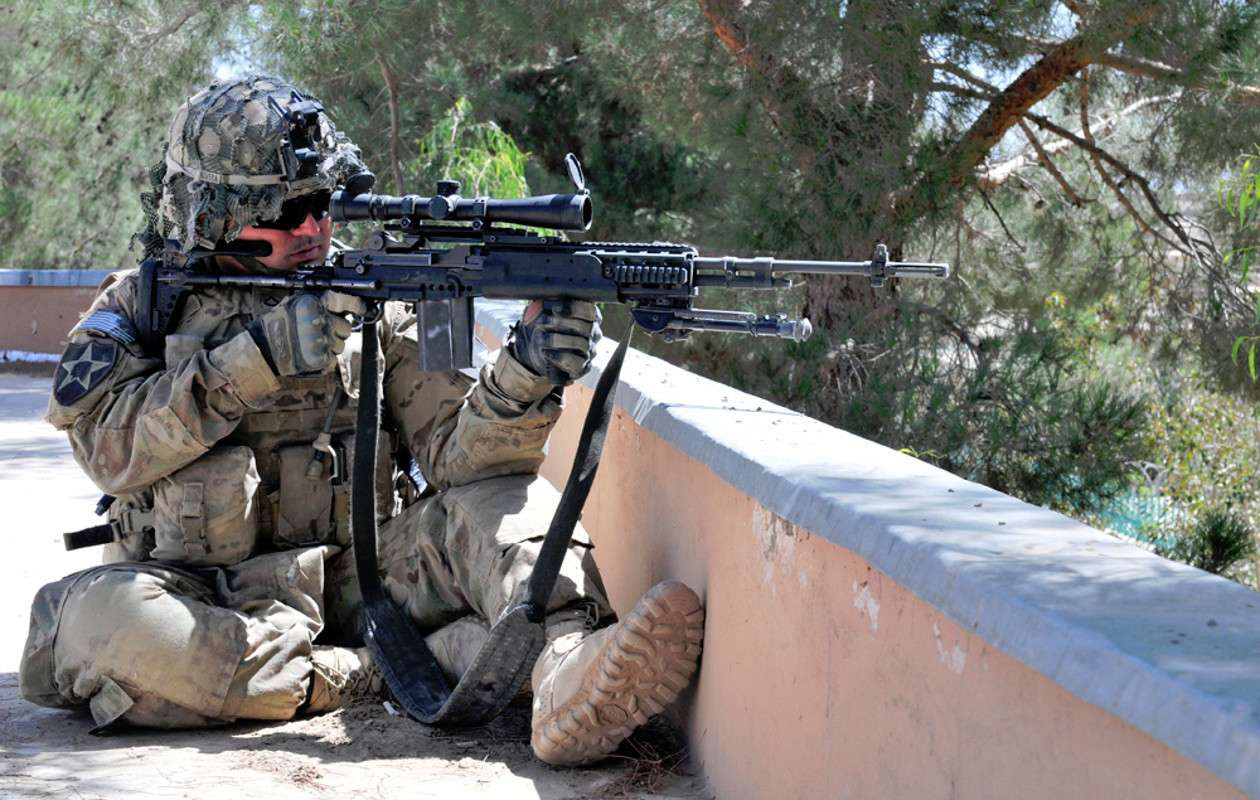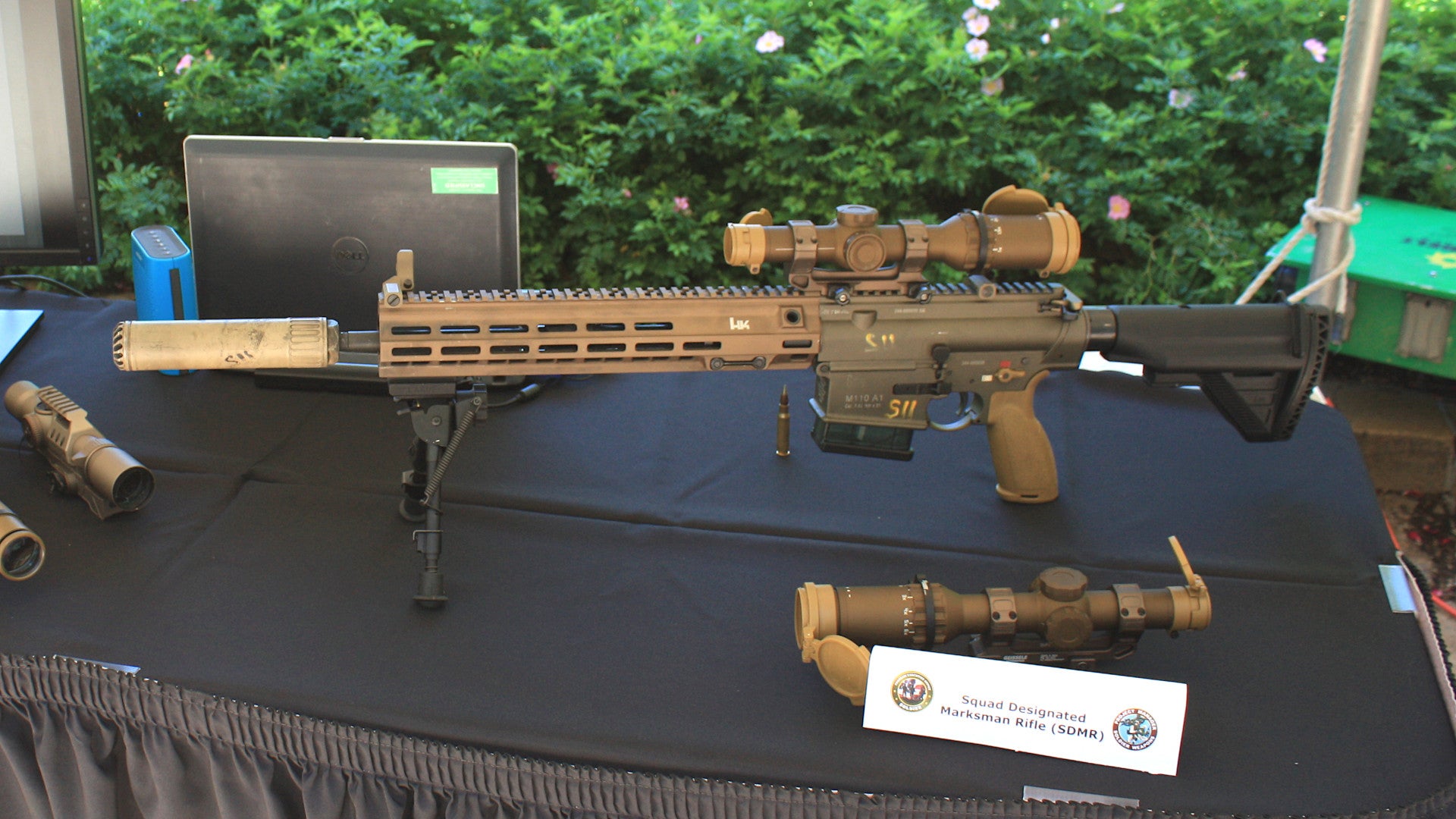U.S. Army personnel at Fort Bliss in Texas are conducting a limited user trial of the service’s new 7.62x51mm Squad Designated Marksman Rifle, or SDM-R. This is the latest in a series of efforts to give individual infantry squads, as well as scout and combat engineering units, the ability to more precisely engage targets at longer distances.
The service revealed the ongoing evaluations on Dec. 27, 2018, in a year-end wrap-up of developments associated with its new Futures Command, which includes a team dedicated to improving the lethality of individual soldiers. The first batch of nearly 120 rifles had gone to the 82nd Airborne Division and other select units in September 2018.
“The Army’s current rifle technology is most effective below the 300-meter [nearly 330 yards] range,” U.S. Army Captain Weston Goodrich, the Assistant Program Manager for Soldier Weapons at the Program Executive Office Soldier, said in an official interview in June 2018. Trained snipers, however, are not typically expected to engage targets less than 650 yards away. The SDM-R is supposed to help bridge that gap.
The rifle is a variant of the Hecker and Koch HK417, which is itself a derivative of the AR-15/M16 series that fire the 5.56x45mm round. The German-headquartered firm also makes a rifle, the increasingly popular HK416, in the smaller caliber.

The German-designed weapons dispense with the direct impingement operating mechanism of the earlier rifles, wherein every shot sends propellant gas carrying unburnt gunpowder and other particulate matter into the action, in favor of a physical gas piston. This largely eliminates concerns about the buildup of debris inside the main workings of the rifle that could cause it to jam.
The SDM-Rs have an adjustable length buttstock and come standard with a Sig Sauer Tango6 scope, which adjustable from 1x “magnification,” or more accurately no magnification, up to 6x. The entire rifle weighs in at just shy of 10 pounds empty. This is around two and a half pounds heavier than the Army’s standard issue 5.56mm M4 carbine with a loaded magazine, but without any other accessories.
Pictures of the SDM-R show it with two different kinds of handguards, one featuring the Magpul M-Lok accessory attachment system and another with the competing VLTOR Weapon Systems KeyMod system. Soldiers could use either type to quickly add flashlights, visible and infrared aim lasers, night vision or thermal optics, and other devices to their rifles.
The rifles will also come with suppressors and the same images show two different possible types, the OSS Suppressors Helix-series HX-QD 762 and the earlier HX 762 from the same company. OSS has discounted the latter type, suggesting that the HX-QD 762 could be the primary suppressor for the SDM-R now.

However, it’s likely that the user evaluation at Fort Bliss, as well as feedback from other units that previously received the weapons, will inform the final, standard issue configuration. The U.S. Marine Corps went through similar comparative testing of accessories in developing its new 5.56mm M38 designated marksman rifle.
The Marines actually looked at the 5.56mm version of the OSS HX suppressor and determined that it had superior performance to the existing Knight’s Armament Company (KAC) QDSS-NT4, but was difficult to install and remove, as well as maintain in the field. That feedback may have contributed to OSS’ decision to develop of the new, quick-detach model.

The choices the Army makes with regards to the accessories on the SDM-R could influence the final configuration of the service’s Compact Semi-Automatic Sniper System (CSASS), as well. This will also be an HK417-based rifle, but will be set up for use by actual sniper teams at longer ranges. Also known as the M110A1, the CSASS is set to begin its own limited user trials in 2019.
“The Army is working to equip each squad with a predetermined amount of marksman rifles,” Captain Goodrich said in his June 2018 interview, but did not say what that number would be. Adding one or two of the weapons to each 9-person infantry squad would improve the ability of even these small formations to respond to certain threats directly without necessarily having to call in outside support.

Studies have consistently shown that Army infantry squads and other small dismounted units are often out-ranged by opponents with their own rifles and machine guns in the NATO standard 7.62x51mm and Russian 7.62x54mm calibers. A weapon such as the SDM-R would offer an additional option for engaging opponents behind cover or other barriers, such as a window or the door of a light vehicle, which might defeat smaller 5.56mm rounds, especially at extended ranges.
The 7.62mm SDM-R will also give small units added armor piercing capabilities over their existing 5.56mm weapons, something the Army has said it is becoming increasingly concerned about. The service canceled plans to equip some squads entirely with some form of 7.62mm rifle to address this threat earlier in 2018. Instead, the new marksman rifles will be able to use the equally new XM1158 armor-piercing round.
The Army had tried to field SDM-Rs in the past using modified M16A2 and A4 rifles equipped with new optics, as well as specially configured M4 carbines, in the mid-2000s. These weapons suffered from the limited performance of even purpose-built “long-range” 5.56mm ammunition in the designated marksman role.

The service ultimately began issuing rebuilt, modified Cold War-era 7.62mm M14 rifles. Unfortunately, those weapons proved difficult to maintain given the age of the base weapons and the lack of commonality with any other fielded small arms.
The SDM-R may not be a long-term solution to demands for increased range and armor penetration capabilities within the Army’s small units, though. The weapons are relatively lightweight for their type – about the same as that of a standard infantry M14, which had no scope or other accessories – but 7.62mm ammunition weights significantly more than 5.56mm and is physically bulkier.

The Army is already investigating polymer- or partially polymer-cased ammunition to help reduce weight, but there’s no way around the size of the rounds. These factors impact how many extra rounds an individual can carry, as well as the weight and dimensional requirements for shipping larger amounts of ammunition to units in the field.
The service is separately working on a program to develop an entirely new family of small arms that all use a so-called “intermediate cartridge” in 6.8mm. The goal is to hopefully provide ballistic performance closer to 7.62mm with logistical requirements more in line with 5.56mm. But this project, known as the Next Generation Squad Weapon (NGSW) program, isn’t set to get fully funded until at least 2020.
In the meantime, the Army expects weapons like the new SDM-Rs to help give small units an added punch against better-protected opponents at longer ranges.
Contact the author: jtrevithickpr@gmail.com
